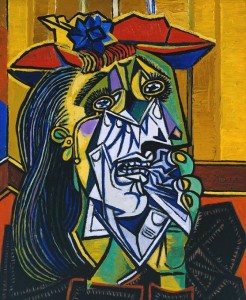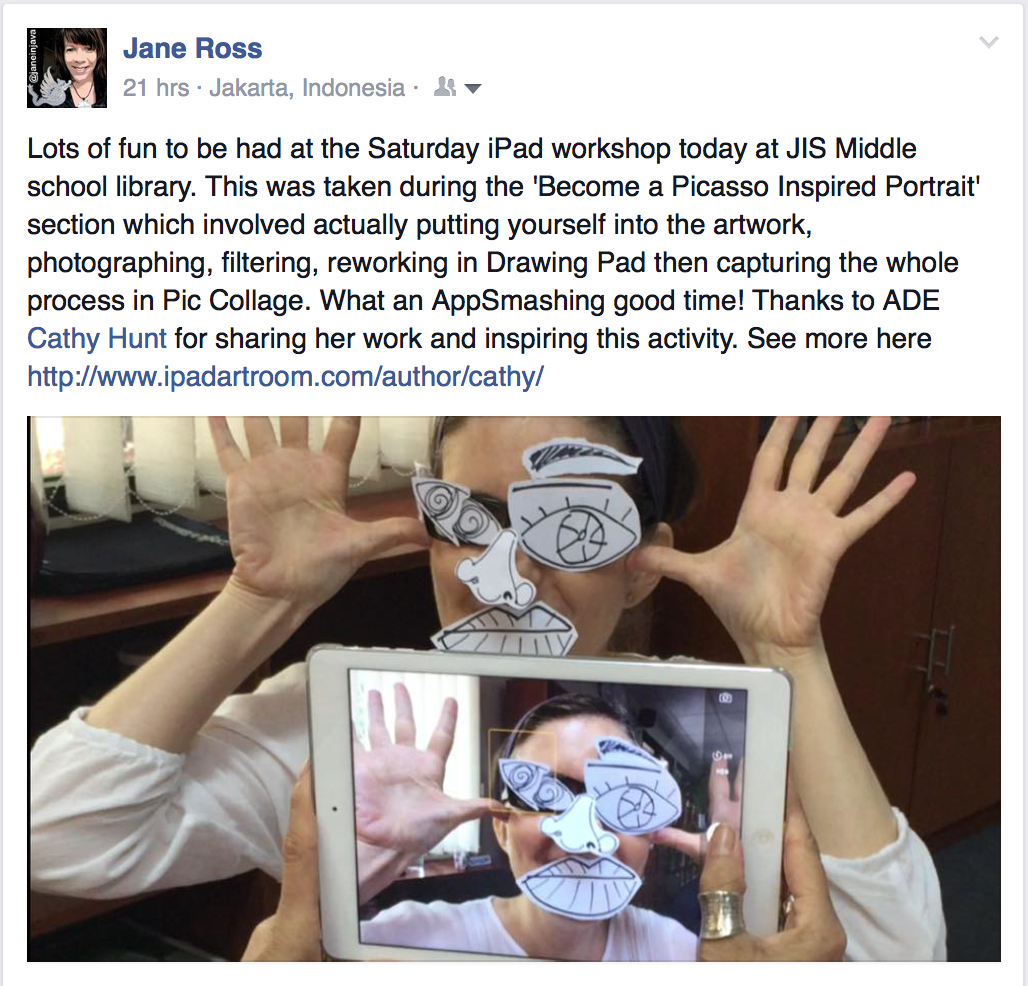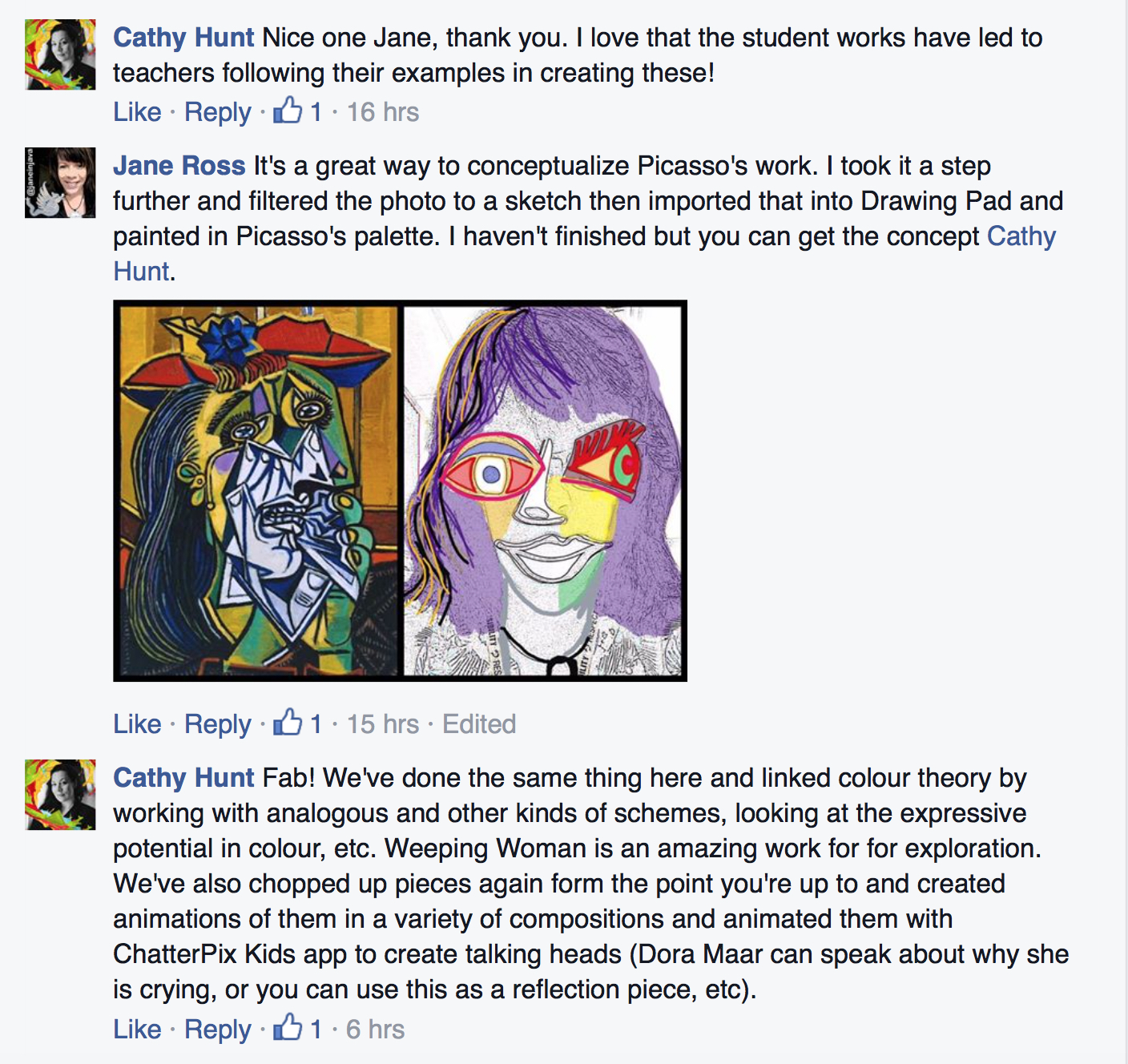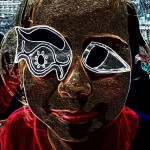
Picasso Portrait Pieces

Picasso The Weeping Woman 1937 (source: http://www.tate.org.uk/art/images/work/T/T05.jpg)
Creativity, collaboration, movement and a little madness – ingredients for an exciting visual art lesson!
While a 1:1 learning environment certainly can have some advantages for learning, shared devices and considered lesson design can provide valuable opportunities for students to collaborate in art-making tasks.
Let’s create ‘Portraits-In-Pieces’!
Picasso’s ‘Weeping Woman’ is a favourite in classrooms worldwide, with young learners responding to this famous work in a huge variety of ways.
In particular, there is the potential for a journey through the powerful, expressive qualities of painting in the face of Dora Maar.
Educators also leverage entry points for investigations of the elements of art, such as line, shape and colour, with this work. And that’s where this lesson is headed, as we mix mobile devices with tactile, collaborative art-making practices in this Year 2 (approx. 7 years old) classroom.

Check out the series of photographs above. What you are seeing is the process of identifying line and shape in Weeping Woman, and students translating those ideas into drawings of their own.
Looking at each other, students were asked to draw their classmates facial features, breaking nose, lips and ears into stylised shapes on paper. These ‘life-sized’ drawings were then cut out and shared with groups.
Working together and choosing from the various options, students constructed a portrait ‘on’ a partner. Using small pieces of blu-tack to hold the paper onto their subject, their visions came to life.
 When their faces were ‘prepared’, our young artists photographed their subjects and used a simple filtering app, orange camera, to explore the effect of changes in colour, line, texture, etc. on their images.
When their faces were ‘prepared’, our young artists photographed their subjects and used a simple filtering app, orange camera, to explore the effect of changes in colour, line, texture, etc. on their images.
Comparing and contrasting these ‘Picasso-Pieces’ with classmates can result in some great discussion about the elements of art as the building blocks of image construction.
Going further, educators can use both Picasso’s work and the student-generated images to compare and contrast the method of production, the use of the elements of art, and the context of creation. Looking at their digital works and the priceless painting hanging at the Tate, students can grapple with questions surrounding the value of art, both in a monetary and cultural sense. They may consider the technology and techniques involved in the processes, ‘the hand of the artist’, authenticity, originality and appropriation, etc.
I do bang on about it, but it is a key idea – in this increasingly visual world, inspiring and empowering students with skills to produce quality, original imagery is crucial. The ‘connected camera’ is a huge win for educators in this regard, as students can begin to increase their photographic skills, creative confidence and visual literacy through appropriate activities from a young age.

Picasso Portrait-Pieces Popping Up…
One of @janeinjava's sessions on 'Creativity with the iPad' today #jisedu inspired by @art_cathyhunt pic.twitter.com/AHW92HUSPF
— Sarah Pickles (@picklennium) September 5, 2015


If you enjoyed this post, you might also like to check out our Arcimboldo Portrait-Pieces.

























Pingback: Picasso Portrait Pieces | iPad Art Room | Edtec...